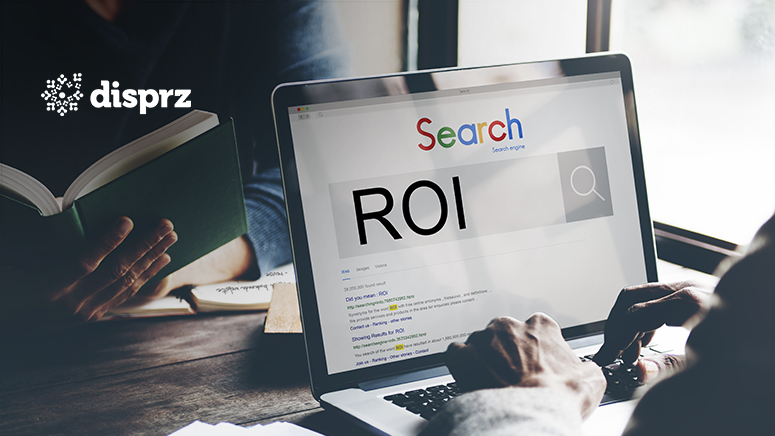
6 min read
• 01 Apr 2024
ROI Calculation: 6 Steps to Assess Your L&D Expenses
Overcome common challenges in ROI analysis and gain valuable insights to align your L&D investments with strategic objectives.
-
eBookEmployee Upskilling - A Detailed Blueprint For Building A Skills-Driven Learning Culture
Organizations today are constantly challenged to adapt, innovate, and grow. Amidst these dynamic demands, one strategic imperative consistently emerges as a cornerstone of success: Learning and Development (L&D). In the pursuit of excellence, businesses invest substantial resources in L&D programs, initiatives, and platforms. These investments extend far beyond financial considerations; they represent a commitment to empowering employees, driving organizational effectiveness, and nurturing a future-ready workforce.
However, in the realm of corporate decision-making, enthusiasm must be met with evidence, and ambition with accountability. This is where the concept of Return on Investment (ROI) enters the spotlight.
Calculating ROI is not merely an exercise in financial analysis; it's a strategic imperative that demands a comprehensive understanding of value creation, impact assessment, and performance optimization. Only 40 percent of companies say that their learning strategy is aligned with business goals. For 60 percent, then, learning has no explicit connection to the company’s strategic objectives.
By quantifying the returns generated by L&D expenditures, organizations gain invaluable insights into the efficacy of their investments, identify areas for improvement, and align their strategies with overarching business objectives.
5 Key Benefits of ROI Calculation of Your L&D Expenses
Strategic Resource Allocation: Calculating ROI enables organizations to allocate resources effectively. By understanding which L&D initiatives yield the highest returns, businesses can prioritize investments that align with strategic objectives and drive sustainable growth.
Evidence-Based Decision Making: ROI analysis provides tangible evidence of the effectiveness of L&D programs. It empowers decision-makers to make informed choices regarding resource allocation, program design, and implementation strategies, based on data-driven insights rather than intuition or anecdotal evidence.
Performance Evaluation and Continuous Improvement: Measuring ROI allows organizations to evaluate the performance of L&D initiatives rigorously. By tracking key metrics and comparing actual outcomes against expected results, businesses can identify areas for improvement, refine their strategies, and enhance the overall impact of their L&D investments.
Demonstrating Value to Stakeholders: ROI analysis serves as a powerful tool for demonstrating the value of L&D investments to stakeholders, including executives, shareholders, and employees. By quantifying the tangible benefits generated by L&D programs, organizations can build credibility, foster trust, and garner support for future initiatives.
Optimizing Employee Development: Understanding the ROI of L&D initiatives helps organizations tailor their training and development programs to meet the evolving needs of employees and the business. By identifying areas of strength and opportunities for growth, businesses can design targeted interventions that maximize the impact of learning experiences and promote professional development.
Challenges in Measuring ROI for L&D Expenses
While the importance of calculating ROI for L&D initiatives is undeniable, organizations often encounter several challenges in the process:
Complexity of Measurement: Measuring the ROI of L&D initiatives can be inherently complex due to the diverse nature of learning outcomes and the multitude of factors that influence performance and behavior change. Quantifying intangible benefits such as improved employee morale, enhanced teamwork, and increased innovation poses significant challenges in ROI analysis.
Data Accessibility and Quality: Obtaining reliable data for ROI analysis can be challenging, especially when dealing with decentralized or outdated systems for tracking training activities and outcomes. Incomplete or inconsistent data sets may undermine the accuracy and validity of ROI calculations, limiting the ability of organizations to derive meaningful insights.
Long-Term Effects and Sustainability: ROI analysis often focuses on short-term outcomes and immediate results, overlooking the long-term effects of L&D investments on organizational performance and sustainability. Measuring the enduring impact of training on employee retention, talent development, and competitive advantage requires a longitudinal perspective that extends beyond traditional ROI frameworks.
Subjectivity and Bias: Human judgment and subjective interpretation can introduce bias into ROI analysis, potentially skewing results and undermining the credibility of findings. Overestimating the benefits or underestimating the costs of L&D initiatives may lead to inflated ROI estimates and misaligned resource allocation decisions.
How to Calculate the ROI of your L&D expenses?
Calculating the ROI of your L&D expenses is crucial for informed decision-making and resource optimization. It provides empirical evidence of program effectiveness, guides strategic investments, and facilitates continuous improvement. Given below are the steps to follow for the ROI calculation.
Identify Costs Associated with the L&D Program
Determine all expenses incurred in developing, delivering, and managing the L&D initiatives. This includes costs for content development, trainer fees, materials, technology infrastructure, facilities, travel expenses, and employee time away from work.
Define Objectives and Expected Benefits
Clearly define the objectives of the L&D program and outline the expected benefits. Identify specific outcomes such as increased staff engagement, reduced turnover, enhanced compliance, improved productivity, or better customer satisfaction.
Assign Monetary Values to Benefits
Estimate the financial impact of each anticipated benefit on the organization's bottom line. For example, quantify the cost savings associated with reduced turnover, decreased L&D administration time, increased productivity, or improved customer satisfaction rates.
Calculate the Total Benefits Generated
Sum up the monetary values assigned to each benefit to determine the total benefits generated by the L&D program. Ensure that benefits are quantifiable, measurable, and directly attributable to the L&D initiatives.
Determine Total Costs Incurred
- Summarize all costs associated with the L&D program identified in Step 1. This includes both direct expenses (e.g., program development, and trainer fees) and indirect costs (e.g., employee time, facilities).
Calculate ROI
- Use the formula: ROI = (Total Benefits - Total Costs) / Total Costs * 100
- Subtract the total costs from the total benefits to find the net benefit.
- Divide the net benefit by the total costs and multiply by 100 to get the ROI percentage.
- A positive ROI indicates that the benefits outweigh the costs, while a negative ROI suggests that the costs exceed the benefits.
Example:
Suppose the total benefits generated by an L&D program aimed at reducing turnover amount to $50,000, and the total costs incurred for the program are $30,000.
ROI = ($50,000 - $30,000) / $30,000 * 100
= $20,000 / $30,000 * 100
= 66.67%
.png?width=996&height=390&name=How%20to%20Calculate%20ROI%20of%20Your%20Learning%20and%20Development%20Expenses-Inner%20image%20(1).png)
This indicates a positive ROI of 66.67%, indicating that for every $1 spent on the L&D program, the organization receives $1.67 in return. Adjustments and refinements can be made based on the calculated ROI to optimize future L&D investments and maximize returns.
Conclusion
Organizations have often struggled with the challenge of quantifying the impact of their Learning and Development (L&D) initiatives. Yet, understanding the Return on Investment (ROI) of such endeavors is paramount for strategic decision-making and resource optimization. The importance of calculating ROI lies in its ability to provide empirical evidence of the effectiveness of L&D programs, ensuring that investments align with organizational objectives and yield tangible benefits.
By leveraging comprehensive ROI analysis, businesses can identify areas for improvement, allocate resources judiciously, and drive continuous improvement in employee development and organizational performance. To streamline this process and empower organizations to make data-driven decisions, our solution offers a sophisticated ROI Calculator for your L&D efforts. This tool facilitates informed decision-making and maximizes the value of your L&D investments.
Download our ROI Calculator now and unlock the full potential of your L&D initiatives.
About the author

Debashree Patnaik
Debashree is a seasoned content strategist at Disprz.ai, specializing in enterprise learning and skilling. With diverse experience in B2B and B2C sectors, including ed tech, she leads the creation of our Purple papers, driving thought leadership. Her focus on generative AI, skilling, and learning reflects her commitment to innovation. With over 6 years of content management expertise, Debashree holds a degree in Aeronautical Engineering and seamlessly combines technical knowledge with compelling storytelling to inspire change and drive engagement.
More Resources
4 min read
• 15 Apr 2024
Unlocking the Power of Managerial Engagement in Talent Development
4 min read
• 09 Apr 2024
Nurturing Excellence in Building Leadership Pipelines
Sign up to get free resources and stay up to date with Disprz!
Discover how Disprz can align learning and upskilling with your desired business outcomes.





